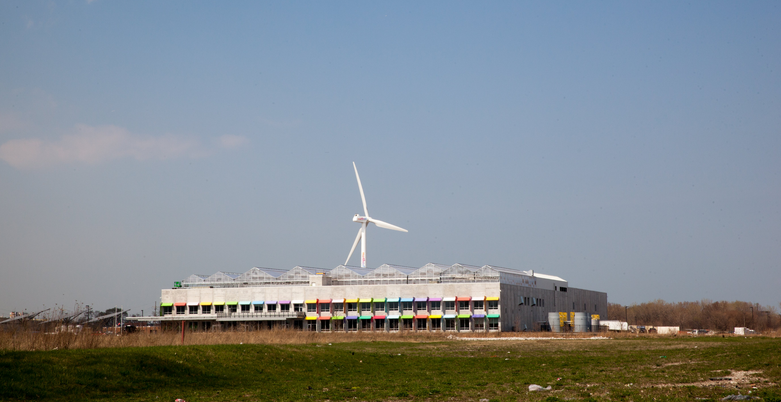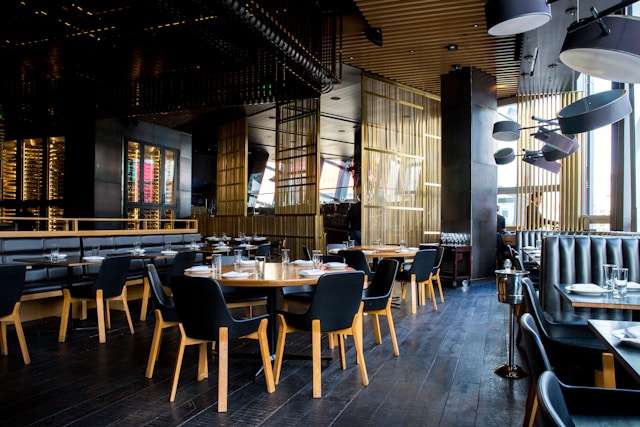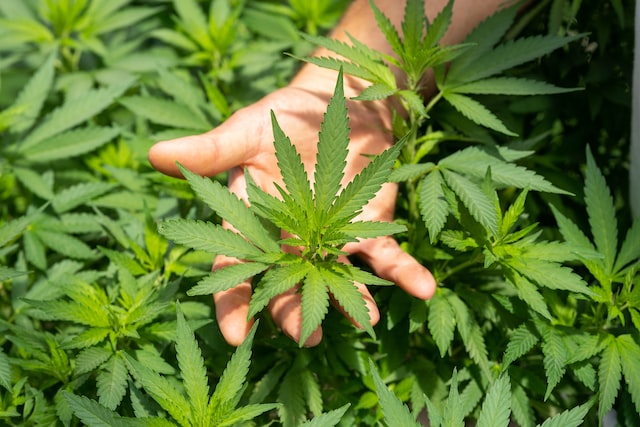It will be “Green Acres” in the world’s largest rooftop greenhouse, coming soon to Chicago’s South Side. The 75,000 square foot structure will sit atop the eco-friendly factory of the soap company known as Method, and will grow green produce such as varieties of lettuce, kale, spinach, bok choy, and the like.
Method opened the 150,000 square foot, $30 million factory in April and incorporated numerous ecologically friendly amenities, such as a 230-foot wind turbine and three solar trees. It is expected to generate about a third of its required energy and meets the Platinum LEED (Leadership in Energy and Environmental Design) standards. In fact, the land itself is a former brownfield site that required clearing of heavy metals and creating rainwater retention ponds with natural grasses for cleaning runoff.
Now they want to top it off with this world’s largest rooftop greenhouse that will produce up to a million pounds of pesticide-free greens per year. The plants will be grown in a soil-less medium by a hydroponic system that uses 10 times less water and requires 20 times less area than conventional farming methods. System variables, such as watering and heating, will be computer controlled, but the greenhouse will employ about 40 workers to oversee production and distribution.
The greenhouse will provide extra insulation for the factory roof but, because of the weight of the greenhouse system, special reinforcement was required for the roof underneath.
The rooftop greenhouse was designed with “cradle to cradle” ecological intent by designer William McDonough + Partners, whose working philosophy is to design “infrastructure that works in correlation with nature.” According to McDonough, “The idea of a building like a tree fascinated me because it was negative entropy. It was something that didn’t just cause chaos and the release of carbon.” The construction and operation will be handled by Brooklyn, NY based Gotham Greens, which specializes in urban rooftop greenhouse construction, production, and distribution.
The plan is to market the produce to local restaurants, grocery stores, farmer’s markets, and community organizations. Avoiding the energy used to ship food to Chicago, this local urban resource reduces that carbon footprint as well. But, the best advantage is that residents can have access to fresh, locally grown produce in the city.
Cities of the future, out of necessity, will likely be situated in such a way as to take advantage of a neighboring manufacturer’s waste output. In nature’s system, one entity’s waste is another entity’s food. This sort of integrated management will require precision planning when designing cities for optimum energy efficiency and to employ such concepts as closed loop, zero waste systems and “cradle to cradle” philosophy.
This rooftop food production may sound like a pie in the sky dream, but it is actually a solution that is grounded in today’s reality of loss of arable land, toxicity of chemical pesticides, contamination of potable water, and release of carbons that cause climate change. It is also a social salve that offers access to fresh greens and brings local agriculture to the urban environment.








